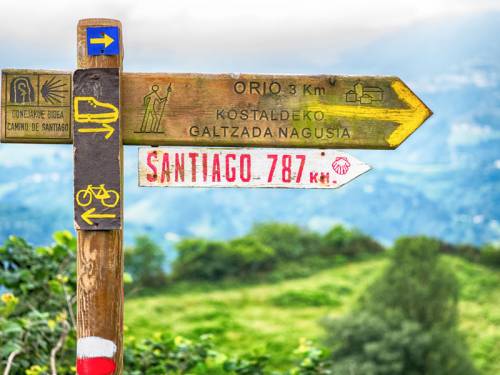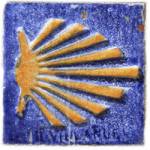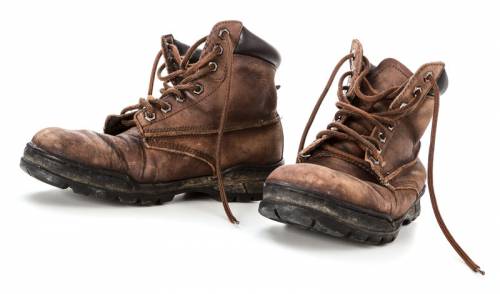An ancient discipline revives
By Roy W. Howard | Presbyterians Today
 The July 2021 issue of National Geographic said it all: Pilgrimages could be the next post-COVID travel trend. The article cited how not just the religious, but people from all walks of life would be seeking to reconnect with the world and find inner peace after experiencing the turbulence of a pandemic world.
The July 2021 issue of National Geographic said it all: Pilgrimages could be the next post-COVID travel trend. The article cited how not just the religious, but people from all walks of life would be seeking to reconnect with the world and find inner peace after experiencing the turbulence of a pandemic world.
Among the ancient disciplines being taken on by contemporary people, the pilgrimage may be the most common. Prior to COVID, nearly a million people around the world have walked long distances on pilgrimage. Even during this current era when uncertainty reigns, thousands have found a way to make the journey of a lifetime. In his book “The Pilgrim Journey: A History of Pilgrimage in the Western World,” James Harpur writes, “At the heart of pilgrimage is a spiritual impulse that has existed from time immemorial.” It is a bridge to the ancient world, particularly the medieval world when pilgrimages flourished.
The reasons for this pilgrimage revival vary. Some walk to discern their vocation, to start over after some trauma, to fulfill a promise, to discover God and to begin a new chapter in life.
A friend and colleague, the Rev. Kenneth Kovacs of Catonsville Presbyterian Church in Baltimore, walked the Camino de Santiago in Santiago, Spain, in 2016. He was 52 years old and, with 30 years of pastoral experience in three congregations, he wanted to reflect on his vocation.
“Where was God calling me? What was being asked of me?” recalled Kovacs. “I wanted to listen to my heart, to my feelings and my dreams. The Camino provided a way forward that I continue to walk.”
Mixed in with all these motives is the sheer adventure of the journey. Not everyone, though, experiences a sense of life transformation, especially those who undertake the journey less as a spiritual pilgrimage and more as another exotic travel adventure.
Yet, for those who walk with intention, who have prepared mentally, physically and spiritually, a pilgrimage can forever mark one’s life. That is certainly true for me.
In 2015, I walked 500 miles to Santiago on the Camino de Santiago pilgrimage route.
A little history
There are many paths to the shrine of the apostle St. James the Great in the Cathedral of Santiago de Compostela in Galicia in northwestern Spain, where tradition has it the remains of the saint are buried. Pilgrims follow these routes as a form of spiritual practice, an opportunity for spiritual growth or even penance.
 In the 9th century, when King Alfonso the Chaste was king of the Asturias region of Spain and Oviedo was the capital, he made a pilgrimage over the mountains to Santiago to confirm the authenticity of the bones of St. James recently found there, thus establishing the oldest known pilgrimage route in the world. This route is known as the Camino Primitivo, or “The Original Way.”
In the 9th century, when King Alfonso the Chaste was king of the Asturias region of Spain and Oviedo was the capital, he made a pilgrimage over the mountains to Santiago to confirm the authenticity of the bones of St. James recently found there, thus establishing the oldest known pilgrimage route in the world. This route is known as the Camino Primitivo, or “The Original Way.”
Today, when people hear about the Camino de Santiago, they think of the pilgrimage from St. Jean Pied de Port in France over the Pyrenees mountains to Santiago. This route was established later in the 11th century by the kings of Leon and Burgos, after King Alfonso fell from power and the capital was moved to Leon. For economic reasons, they wanted pilgrims to travel through their territories on the way to Santiago.
Thousands walked this way. But like many medieval practices, it fell away. In the 1970s, a priest decided to renew the 11th-century Camino de Santiago and enlisted helpers. It is now the most popular pilgrimage in the world. Pope Francis described it as a path of human solidarity as well as religious awakening. That solidarity can be seen at times by the pilgrims carrying a shell on their backpacks as a Christian symbol of baptism linking them to the past. Other contemporary pilgrims walk with a single staff linking them to history. I walked with my hiking poles and carried my shell on my pack.
As part of my intentional practice, I committed each day to reflection on one of the fruits of the Spirit, and later to the qualities of love. Each morning before sunrise, I put all my belongings in my pack, stepped out the door and began walking in faith, not knowing where I would eat or sleep and who I would meet. I carried this intention: I will receive this day with gratitude and an open heart. I composed chants, which I brought back to my congregation to sing. Each evening I wrote journal reflections.
I met pilgrims from across the world, some of whom remain close friends. For me, it was a concentrated experience of the church in the deepest way possible: communal sharing in one another’s burdens, sharing our life stories, carrying burdens, breaking bread and knowing the conviviality of the Spirit that transcends all parochial bounds. The entire journey was humbling, joyous and heart-opening.
Same walk, new purpose

Roy Howard has made two spiritual pilgrimages. Courtesy of Roy Howard
Two years after my initial pilgrimage, I returned to Spain. Why did I walk again? In addition to following an intense call to return — a calling that is common among pilgrims but nearly impossible to comprehend for those who have not walked — I wanted to walk alongside the pilgrims who identify as religiously “none.” Members of this group, particularly millennials, are not necessarily atheists or even agnostics, but they have no positive experience with any religious institution, especially the church.
My purpose was to listen to their stories, learn from them and share my own stories. I walked the 200-mile pilgrimage like an embedded journalist, sharing fully in the experiences of others without the screen of pastoral privilege. I wanted to let go of all privilege and all assumptions. I wanted to assume the posture recommended by Dietrich Bonhoeffer: Be fully human in a world where Christianity has lost respect and personal meaning for vast swaths of humanity. The simple hostels with multiple bunk beds reminded me that life consists not in possessions but in the relationships we form. One fellow pilgrim said, “Knowing the Primitivo was the original Camino felt like I was walking to honor the true friend and disciple of Jesus … a humble man of simplicity.”
The Rev. Debra Carl, a pastor who served churches in Arkansas and who is now a leadership coach living in the Netherlands, remarked on her Camino pilgrimage that she experienced some difficulties, including an unexpected painful fall. That, though, led her to discover humility, which she said “led to perseverance, which led to resilience, then joy and ultimately peace.”
“[Since the pilgrimage] I have continued this simple journey from humility to peace. It is a daily takeaway for me,” said Carl.
 Walking the Primitivo, I came to know three young friends closely — all of whom were in the religious “none” group. Toward the end of that pilgrimage, prior to our arrival in Santiago, I wrote a note of gratitude to each one with a personal prayer, along with a playlist of songs I had selected for each. There were tears. Something occurred beyond the bounds of religion or church, and we prayed — together.
Walking the Primitivo, I came to know three young friends closely — all of whom were in the religious “none” group. Toward the end of that pilgrimage, prior to our arrival in Santiago, I wrote a note of gratitude to each one with a personal prayer, along with a playlist of songs I had selected for each. There were tears. Something occurred beyond the bounds of religion or church, and we prayed — together.
In the morning, we walked into Santiago and together worshiped in the cathedral with fellow pilgrims — seekers, nones, believers from around the world. We worshiped in tears of exhaustion, gratitude and joy. My pilgrimage was complete. But are our “pilgrimages” ever complete? There’s a saying among pilgrims: “The true Camino begins when Camino ends.”
The Rev. Roy Howard lives in North Potomac, Maryland. He served for 18 years as pastor of Saint Mark Presbyterian Church in Bethesda, Maryland. He is a certified coach with the International Coaching Federation and dean of the Academy of Artful Leadership. In 2015 he walked the Camino de Santiago and returned to Spain in 2017 to walk the Camino Primitivo.
Funding your pilgrimage
While pandemic concerns and safety precautions dictate future travel plans, the world is opening again. Pastors are planning or revisiting put-on-hold sabbatical plans, which may include embarking on a pilgrimage. To fund sabbaticals, the Board of Pensions offers a “Sabbath Sabbatical Support” program. Eligible ministers can receive grants up to $4,000. Learn more at pcusa.info/sabbatical-support
Support Presbyterian Today’s publishing ministry. Click to give
![]() You may freely reuse and distribute this article in its entirety for non-commercial purposes in any medium. Please include author attribution, photography credits, and a link to the original article. This work is licensed under a Creative Commons Attribution-NonCommercial-NoDeratives 4.0 International License.
You may freely reuse and distribute this article in its entirety for non-commercial purposes in any medium. Please include author attribution, photography credits, and a link to the original article. This work is licensed under a Creative Commons Attribution-NonCommercial-NoDeratives 4.0 International License.
Categories: Presbyterians Today
Tags: Camino de Santiago, pilgrimage, shrines, spirituality
Ministries: Presbyterians Today